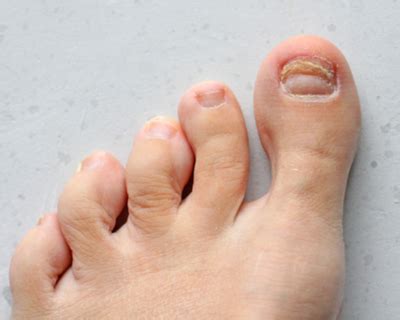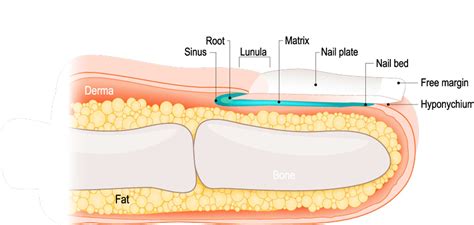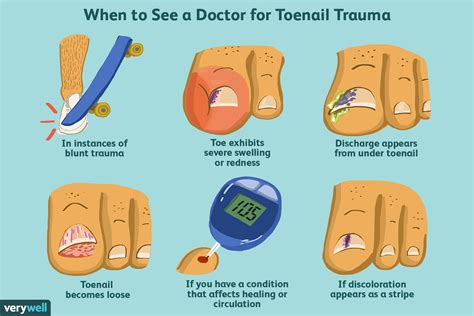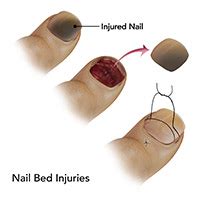Intro
Learn injured toenail bed care tips to promote healing and prevent infection. Treat toenail trauma with proper wound care, pain management, and nail bed protection to recover quickly.
The toenail bed, a sensitive and often overlooked part of our anatomy, plays a crucial role in protecting our toes from external pressure and trauma. However, when injured, it can be a source of significant pain and discomfort. Injured toenail bed care is essential to promote healing, prevent infection, and minimize the risk of long-term damage. In this article, we will delve into the world of injured toenail bed care, exploring the causes, symptoms, and treatment options available to those affected.
Injuries to the toenail bed can occur due to various reasons, including trauma, infection, or poor foot care. Trauma, such as dropping a heavy object on the toe or stubbing it against a hard surface, can cause bruising, bleeding, or even toenail loss. Infections, like paronychia or onychomycosis, can also lead to inflammation and damage to the toenail bed. Furthermore, poor foot care, including improper trimming or cleaning of the toenails, can increase the risk of injury and infection.
The symptoms of an injured toenail bed can vary depending on the severity and cause of the injury. Common symptoms include pain, swelling, redness, and bleeding. In some cases, the toenail may become loose or fall off, exposing the sensitive nail bed underneath. If left untreated, an injured toenail bed can lead to more severe complications, such as infection, abscess formation, or even osteomyelitis, a bone infection that can be life-threatening if not properly treated.
Injured Toenail Bed Care and Treatment

Injured toenail bed care and treatment depend on the severity and cause of the injury. Mild injuries, such as minor bruising or swelling, can be treated with home remedies, including applying ice to reduce pain and inflammation, elevating the foot to reduce swelling, and taking over-the-counter pain medication. More severe injuries, such as deep cuts or puncture wounds, may require medical attention to prevent infection and promote healing.
Home Remedies for Injured Toenail Bed Care
For minor injuries, several home remedies can be used to promote healing and reduce discomfort. These include: * Applying a topical antibiotic ointment to prevent infection * Covering the affected area with a bandage to protect it from further irritation * Soaking the foot in warm water to reduce pain and swelling * Elevating the foot to reduce swelling and promote blood flow * Taking over-the-counter pain medication, such as acetaminophen or ibuprofen, to reduce pain and inflammationMedical Treatment for Injured Toenail Bed

For more severe injuries, medical treatment may be necessary to prevent infection and promote healing. This can include:
- Antibiotic therapy to prevent infection
- Pain management, such as prescription pain medication or nerve blocks
- Wound care, including debridement and dressing changes
- Surgical intervention, such as toenail removal or repair of the nail bed
Surgical Intervention for Injured Toenail Bed
In some cases, surgical intervention may be necessary to treat an injured toenail bed. This can include: * Toenail removal, either partial or total, to prevent further irritation and promote healing * Repair of the nail bed, including suturing or grafting, to restore the nail bed to its normal function * Debridement, or removal of dead tissue, to prevent infection and promote healingPrevention of Injured Toenail Bed

Prevention is key when it comes to injured toenail bed care. Several steps can be taken to reduce the risk of injury and promote overall foot health. These include:
- Practicing good foot hygiene, including washing the feet daily and drying them thoroughly
- Trimming the toenails properly, including cutting straight across and avoiding cutting too short
- Wearing proper fitting shoes, including avoiding tight or narrow shoes that can put pressure on the toes
- Avoiding sharing personal care items, such as nail clippers or files, to prevent the spread of infection
Importance of Proper Foot Care
Proper foot care is essential to prevent injured toenail bed and promote overall foot health. This includes: * Washing the feet daily to prevent the buildup of bacteria and fungi * Drying the feet thoroughly, especially between the toes, to prevent moisture buildup * Trimming the toenails properly to prevent ingrown toenails and other complications * Wearing proper fitting shoes to reduce pressure on the toes and prevent irritationComplications of Injured Toenail Bed

If left untreated, an injured toenail bed can lead to several complications, including:
- Infection, including bacterial or fungal infections that can spread to other parts of the body
- Abscess formation, or the buildup of pus in the affected area
- Osteomyelitis, or bone infection, which can be life-threatening if not properly treated
- Permanent damage to the nail bed, including scarring or deformity
Long-Term Effects of Injured Toenail Bed
The long-term effects of an injured toenail bed can be significant, including: * Permanent damage to the nail bed, including scarring or deformity * Chronic pain or discomfort, especially if the injury is not properly treated * Increased risk of infection or other complications, especially if proper foot care is not practiced * Emotional distress or anxiety, especially if the injury is severe or debilitatingConclusion and Final Thoughts

In conclusion, injured toenail bed care is essential to promote healing, prevent infection, and minimize the risk of long-term damage. By understanding the causes, symptoms, and treatment options available, individuals can take the necessary steps to protect their foot health and prevent complications. Whether through home remedies or medical treatment, proper care and attention can make all the difference in the recovery process.
We invite you to share your thoughts and experiences with injured toenail bed care in the comments below. Have you or someone you know experienced an injured toenail bed? What steps did you take to promote healing and prevent complications? Share your story and help others understand the importance of proper foot care.
What are the symptoms of an injured toenail bed?
+The symptoms of an injured toenail bed can include pain, swelling, redness, and bleeding. In some cases, the toenail may become loose or fall off, exposing the sensitive nail bed underneath.
How can I prevent an injured toenail bed?
+Prevention is key when it comes to injured toenail bed care. Several steps can be taken to reduce the risk of injury and promote overall foot health, including practicing good foot hygiene, trimming the toenails properly, wearing proper fitting shoes, and avoiding sharing personal care items.
What are the complications of an injured toenail bed?
+If left untreated, an injured toenail bed can lead to several complications, including infection, abscess formation, osteomyelitis, and permanent damage to the nail bed.
